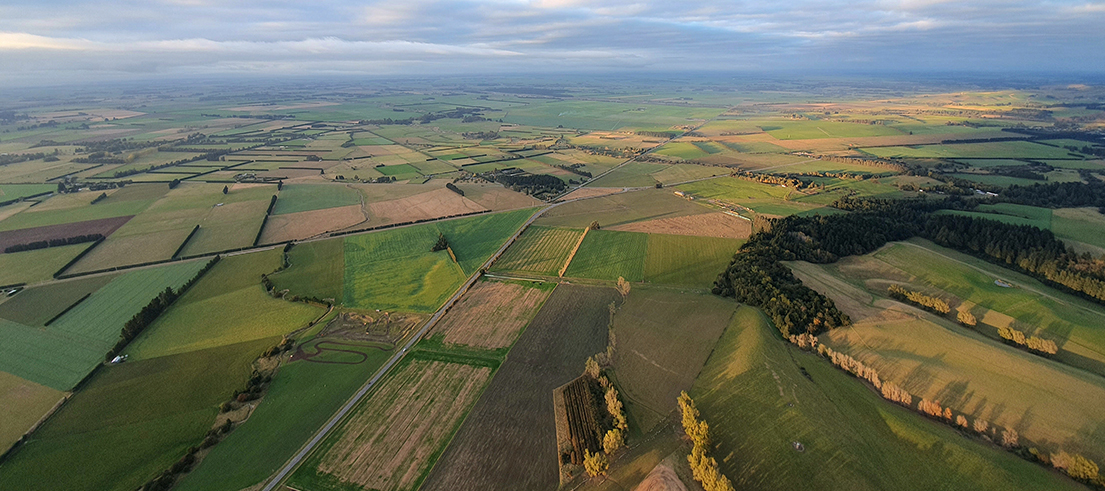
Plan Change 7 and Plan Change 2 - What you need to know
With effect from 1 September 2023 Plan Change 7 is partially operative and Plan Change 2 is fully operative. Both changes are amendments to the Canterbury Land and Water Regional Plan.
Simplifying rules to improve water quality
This represents a significant piece of mahi over a number of years, with staff working closely with iwi, the Ōrāri Temuka Ōpihi Pareora (OTOP) and Waimakariri water zone committees, councillors and the wider community.
Plan Change 7 takes a significant step towards giving effect to the National Policy Statement for Freshwater Management 2020. Find out more about the Government's Essential Freshwater package and the work we are undertaking.
Plan Chang 7 becoming partially operative strengthens rules that further protect water quality and quantity in the Waimakariri and OTOP zones and will help streamline the consenting process for applicants and staff across the region.
There is one unresolved appeal to Plan Change 7 in relation to the parts that apply to the forestry industry, which is why Plan Change 7 is only partially operative at this time.
Plan Change 7
Plan Change 7 has three components (Parts A, B and C).
About parts A, B and C to Plan Change 7
Part A is an 'Omnibus' change generally covering amendments to region-wide provisions (policies, rules, maps and schedules).
Part A aims to:
- Improve freshwater outcomes for Canterbury.
- Protect habitats of indigenous freshwater species.
- Enable consideration of Ngāi Tahu values in relation to a broader range of activities.
- Provide for the use of managed aquifer recharge (a technique to improve the volume and quality of groundwater) across the region.
- Establish a new nutrient framework for commercial vegetable growing operations.
- Implement recommendations from the Hinds Drains Working Party.
Parts B and C of Plan Change 7 relate to the Orari Temuka Opihi Pareora (OTOP) and Waimakariri sub-regional zones respectively. These parts were developed in collaboration with the Waimakariri and OTOP Zone Committees and implement recommendations in their Zone Implementation Programme Addendums (ZIPAs).
Parts B and C introduce:
- New water quality limits for groundwater and surface water.
- Additional requirements for farms to further reduce nitrogen losses over time.
- Increased minimum flows for rivers and streams.
- A cap on the volume of water available for allocation.
- Requirements to exclude stock from a broader range of waterbodies.
Farm Environment Plan changes
Plan Change 7 introduces additional information and assessment requirements when preparing Farm Environment Plans (FEPs).
These include the following region-wide provisions:
- Identification and protection of springs
- Commercial vegetation growing operators using the alternative consent pathway are not required to prepare a nutrient budget.
In the OTOP sub-region these provisions apply in addition to the region-wide ones:
- Farming land use consent and FEP required for farms larger than 10 hectares in some circumstances
- Consideration to be given to providing for an abundance of mahinga kai, any in-stream biodiversity values within springs, and stock exclusion from a wider range of waterbodies such as artificial watercourses and springs
- Farming using irrigation within a Rock Art Management Area to identify how rock art is to be protected
- Farming using irrigation or involving winter grazing within the Mātaitai and Waipuna Protection Zone to identify how adverse effects on water quality will be minimised.
In the Waimakariri sub-region these provisions apply in addition to the region-wide ones:
- Farming land use consent and FEP must be prepared for farms larger than five hectares in some circumstances
- Farming land use consent and FEP must be prepared for farms larger than five hectares that undertake winter grazing or irrigation and are located close to surface water in the Ashley Estuary/Te Aka Aka and Coastal Protection Zone
- Consideration must be given to providing for an abundance of mahinga kai, and stock exclusion from a wider range of waterbodies such as artificial watercourses and springs.
Existing consent and FEPs
New applications for resource consent for farming activities will need to take into account the changes introduced by Plan Change 7 when preparing FEPs.
The consent conditions of existing resource consent requiring the preparation of an FEP are likely to also require existing FEPs to take into account the changes introduced by Plan Change 7 when the periodic review and updating of the FEP is required.
Climate change considerations
The plan changes introduce new provisions based on several considerations including the current understanding of how climate change will impact the Canterbury region. Climate change impacts are expected to include changes to the amount of flow in rivers.
Science assessments that informed the plan changes accounted for these impacts; for example, when setting new minimum flow regimes in rivers.
Plan Change 2 to the WRRP
Plan Change 2 makes changes to the Waimakariri River Regional Plan (WRRP). The WRRP promotes sustainable management of surface water and hydraulically connected groundwater within the Waimakariri catchment.
Plan Change 2 is the first step in a move to bring all rules relating to the Waimakariri sub-region into a single planning document - the Canterbury Land and Water Regional Plan (CLWRP). The WRRP will continue to apply to activities within the main stem of the Waimakariri River, its upper catchment, and tributaries south of the main stem.
Activities in the rest of the Waimakariri sub-region are now instead managed by the CLWRP (including provisions in section 8 which apply specifically to the Waimakariri sub-region).
